Want to learn How To Make And Fly Paper Airplanes that soar through the air? At flyermedia.net, we’ll show you the best paper airplane designs for distance and fun. Discover easy-to-follow instructions and tips to enhance your paper airplane flying skills.
Let’s explore this engaging activity, perfect for aviation enthusiasts of all ages, and ensure your creations achieve maximum flight time and distance. This guide includes paper plane models, aerodynamic principles, and the latest in aviation news and career opportunities.
1. Why Learn How to Make and Fly Paper Airplanes?
Learning how to make and fly paper airplanes is not just a fun pastime; it’s an engaging way to understand basic aerodynamic principles. Understanding how airplanes work can be fun for those interested in flight training or aviation careers.
- Educational Value: Paper airplanes are a hands-on introduction to aerodynamics, teaching about lift, drag, and thrust.
- Creative Expression: Designing different models encourages creativity and problem-solving skills.
- Accessibility: All you need is a sheet of paper, making it a cost-effective and accessible activity for everyone.
- Stress Relief: The simple act of folding and flying paper airplanes can be a relaxing and enjoyable break from daily routines.
- Family Fun: It’s a great way to bond with family and friends, offering a shared activity that’s both entertaining and educational.
2. What Materials Do You Need to Make Paper Airplanes?
To get started with making paper airplanes, you only need a few basic materials. The type of paper and tools you use can affect the performance of your paper airplanes.
- Paper: Standard 8.5 x 11 inch printer paper is ideal for beginners due to its balance of weight and flexibility.
- Scissors: Optional, for trimming or creating advanced designs.
- Ruler: Can be helpful for making precise folds.
- Paper Clips: Can be used to adjust the weight distribution for better flight.
- Markers or Crayons: For decorating and personalizing your creations.
- Different Paper Types: Experiment with cardstock or origami paper for different flight characteristics.
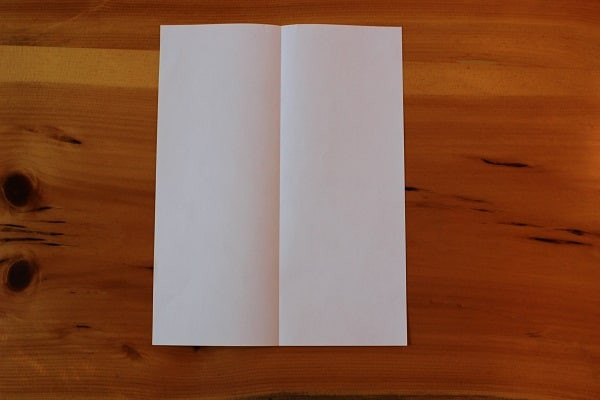 Materials for Making Paper Airplanes
Materials for Making Paper Airplanes
3. What are the Basic Aerodynamic Principles for Paper Airplanes?
Understanding the principles of aerodynamics is crucial for designing paper airplanes that fly well. These principles dictate how your plane interacts with the air.
- Lift: The force that opposes gravity, created by the shape of the wings as air flows over them.
- Drag: The resistance the air exerts on the plane, which you want to minimize for longer flights.
- Thrust: The force that propels the plane forward, which in this case comes from your throw.
- Weight: The force of gravity pulling the plane down; balanced weight distribution is key for stability.
- Bernoulli’s Principle: Faster airflow over the top of the wing creates lower pressure, generating lift.
- Angle of Attack: The angle between the wing and the oncoming airflow, which affects lift and drag.
4. What is the Bulldog Dart Paper Airplane Model?
The Bulldog Dart is an excellent choice for beginners due to its simplicity and reliable flight. Its design emphasizes ease of folding and stable flight characteristics.
4.1. How to Fold the Bulldog Dart
Follow these steps to create your own Bulldog Dart paper airplane:
-
Fold in Half: Fold the paper lengthwise and unfold to create a center crease.
 Materials for Making Paper Airplanes
Materials for Making Paper Airplanes -
Fold Top Corners: Fold the top two corners down to meet at the center crease.
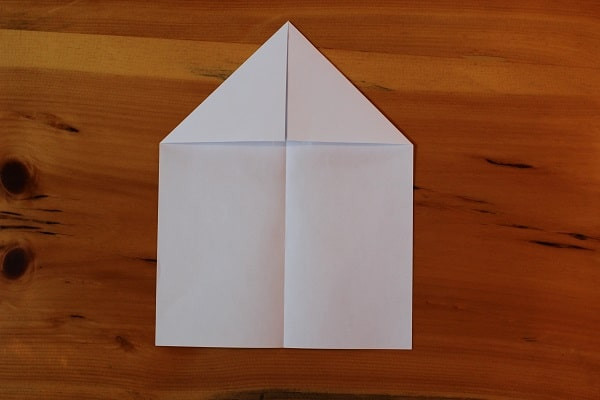 Fold top corners to center crease
Fold top corners to center crease -
Flip and Fold Again: Flip the plane over and fold the corners in again to the center crease.
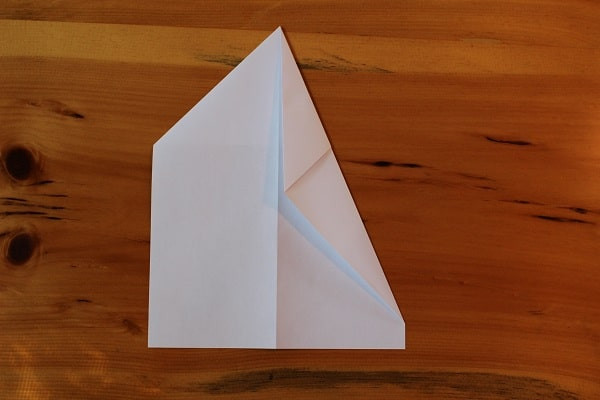 Flip and fold corners again
Flip and fold corners again -
Fold Top Point Down: Fold the top point down so that the tip meets the bottom of where the previous folds come together.
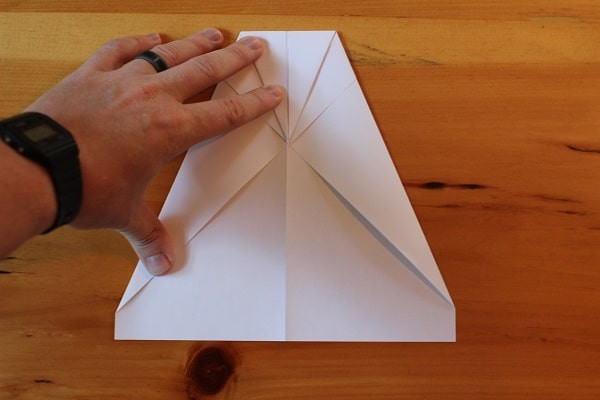 Fold top point down
Fold top point down -
Fold in Half: Fold the entire plane in half, in on itself.
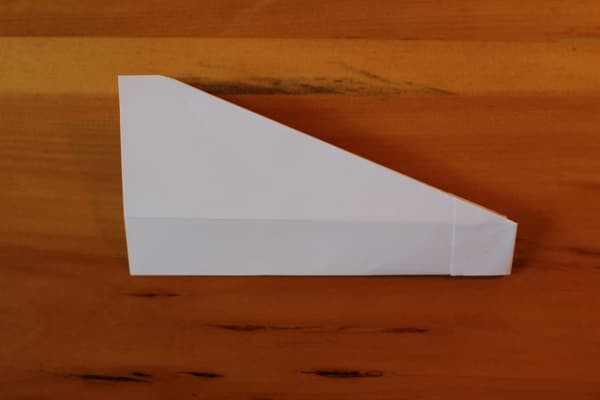 Fold plane in half
Fold plane in half -
Fold Wings Down: Fold the wings down, creating a straight line across from the top of the snub nose. Repeat on the other side.
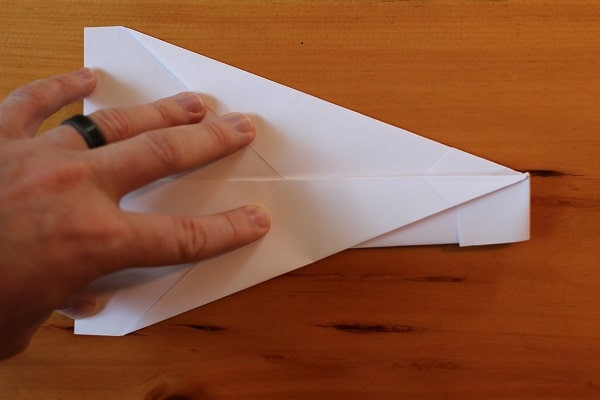 Fold wings down
Fold wings down
4.2. Tips for Flying the Bulldog Dart
- Gentle Throw: The Bulldog Dart flies best when thrown at lower speeds.
- Balance: Ensure the plane is evenly balanced for stable flight.
- Adjustments: Make small adjustments to the wings for better performance.
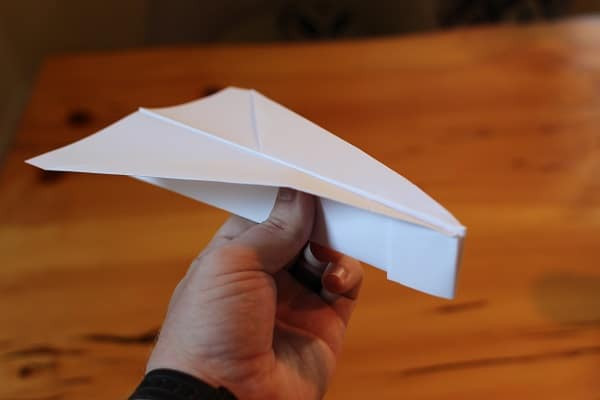 Finished Bulldog Dart Paper Airplane
Finished Bulldog Dart Paper Airplane
5. What is the Harrier Paper Airplane Model?
The Harrier is an intermediate-level paper airplane that offers improved flight performance compared to the Bulldog Dart. It requires more precise folding and results in a more aerodynamic design.
5.1. How to Fold the Harrier
Follow these steps to create the Harrier paper airplane:
-
Fold in Half: Fold the paper lengthwise and unfold to create a center crease.
 Fold paper in half lengthwise
Fold paper in half lengthwise -
Fold Top Corners: Fold the top corners in so they meet at the center crease.
 Fold top corners to center crease
Fold top corners to center crease -
Fold Top Down: Fold the entire top down, resembling an envelope, leaving about a half-inch at the bottom.
 Fold top down like an envelope
Fold top down like an envelope -
Fold Corners to Middle: Fold the top corners in so they meet at the middle.
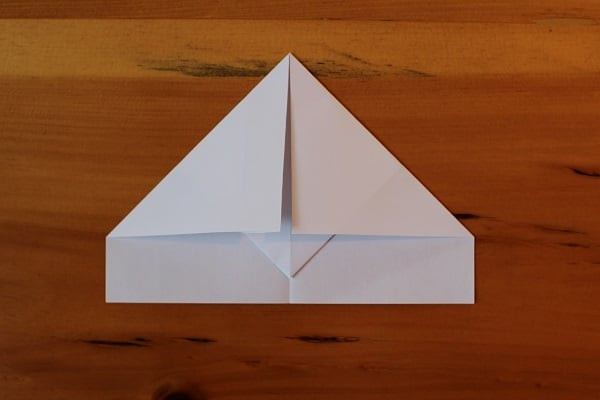 Fold corners to middle crease
Fold corners to middle crease -
Fold Triangle Up: Fold the small triangle up to hold the previous folds in place.
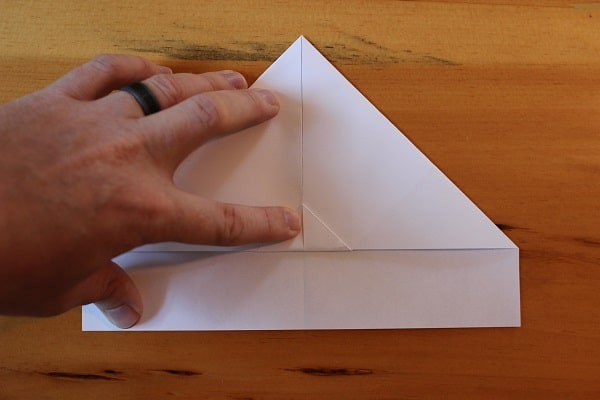 Fold small triangle up
Fold small triangle up -
Fold in Half Outwards: Fold the plane in half outwards, ensuring the triangular fold is visible on the bottom edge.
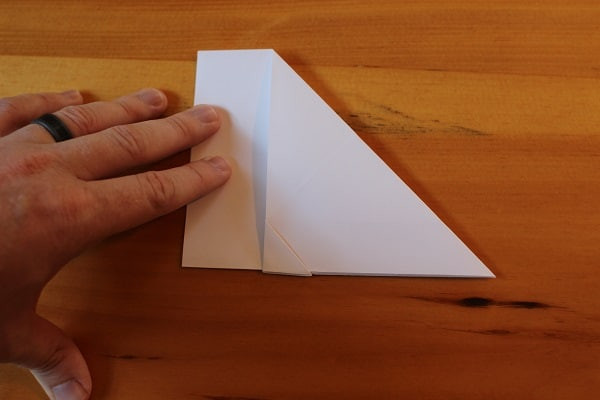 Fold in half outwards
Fold in half outwards -
Fold Wings Down: Fold the wing down so its edge meets the bottom edge of the airplane. Repeat on the other side.
 Fold wings down to bottom edge
Fold wings down to bottom edge
5.2. Tips for Flying the Harrier
- Balanced Throw: Throw the Harrier with a smooth, balanced motion.
- Wing Adjustments: Adjust the wing flaps for optimal glide.
- Outdoor Conditions: Fly in calm conditions for best results.
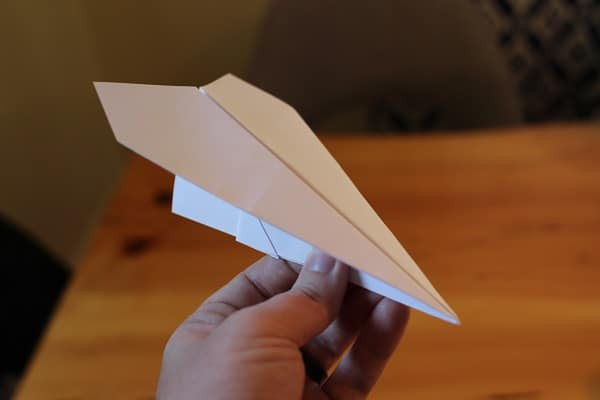 Finished Harrier Paper Airplane
Finished Harrier Paper Airplane
6. What is the Hammer Paper Airplane Model?
The Hammer is an advanced paper airplane model known for its exceptional flight distance and stability. It requires precise folding and attention to detail, making it a rewarding project for experienced paper airplane enthusiasts.
6.1. How to Fold the Hammer
Follow these detailed steps to create the Hammer paper airplane:
-
Fold Left Corner Down: Fold the top left corner down to meet the right edge of the paper, then unfold to create a guiding crease.
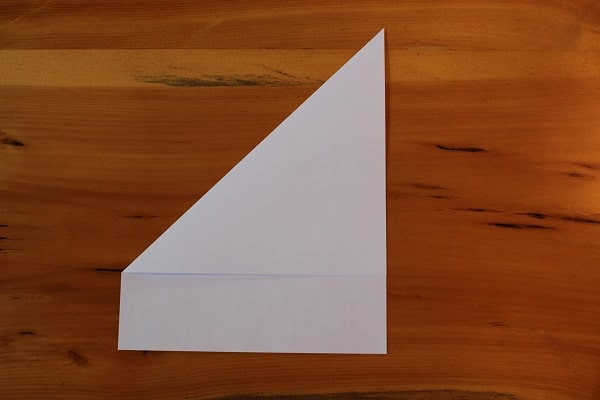 Fold top left corner down
Fold top left corner down -
Fold Right Corner Down: Repeat with the top right corner and unfold.
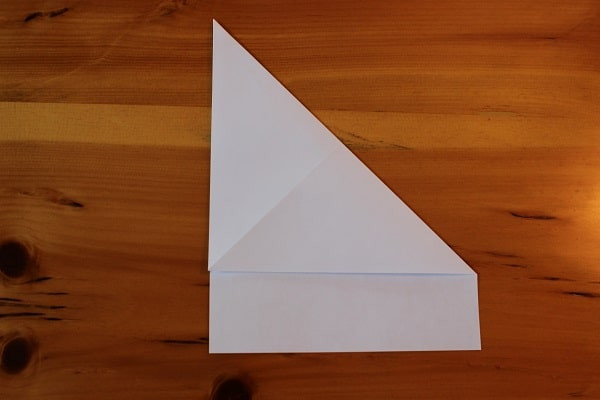 Fold top right corner down
Fold top right corner down -
Fold Right Corner to Crease: Fold the top right corner down so its edge meets the crease from top left to bottom right.
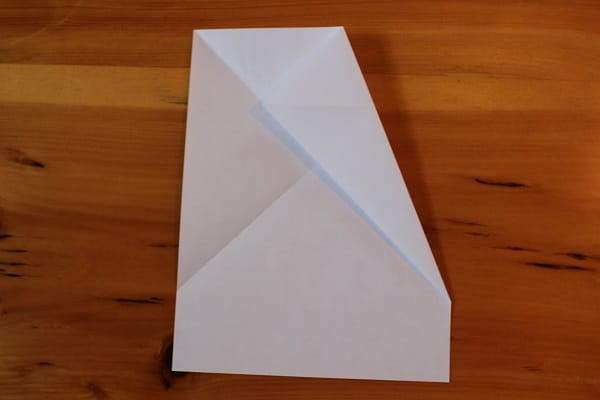 Fold right corner to diagonal crease
Fold right corner to diagonal crease -
Fold Left Corner to Crease: Do the same with the left corner, aligning the top left point with the diagonal right edge.
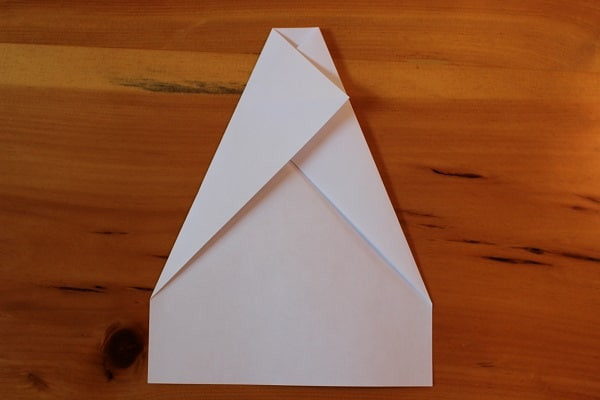 Fold left corner to diagonal crease
Fold left corner to diagonal crease -
Fold in Half, Unfold: Fold the plane in half in on itself, then unfold, using the middle crease as a guide.
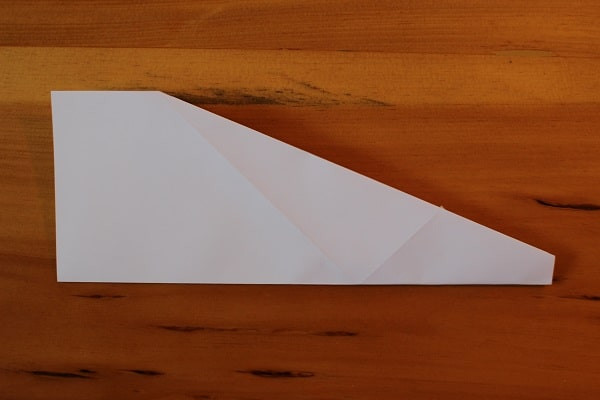 Fold in half and unfold
Fold in half and unfold -
Fold Top Down: Fold the top down so its edge meets the bottom edge.
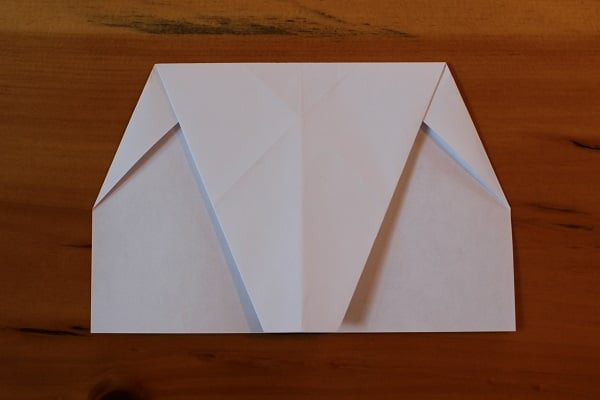 Fold top down to bottom edge
Fold top down to bottom edge -
Fold Top Corners to Middle: Fold the top corners down so their points meet at the middle crease.
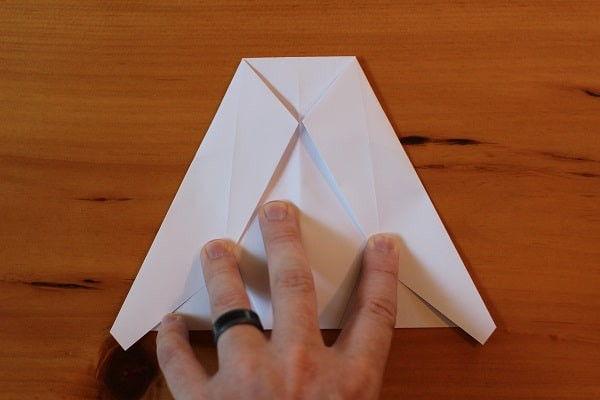 Fold top corners to middle crease
Fold top corners to middle crease -
Unfold: Unfold these creases to use them as guides.
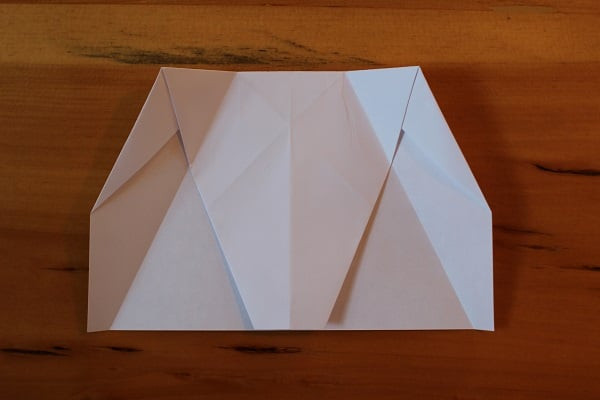 Unfold creases
Unfold creases -
Fold Top Edge Back Up: Fold the top edge back up at the point where it meets the creases from the previous step.
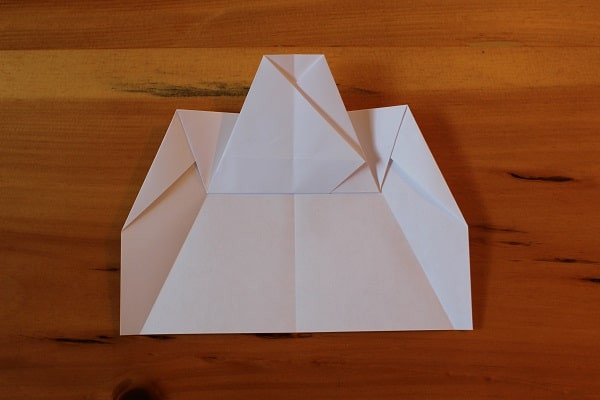 Fold top edge back up
Fold top edge back up -
Fold Corners In Again: Fold the corners in again, aligning their edges with the top flap and the crease from Step 7.
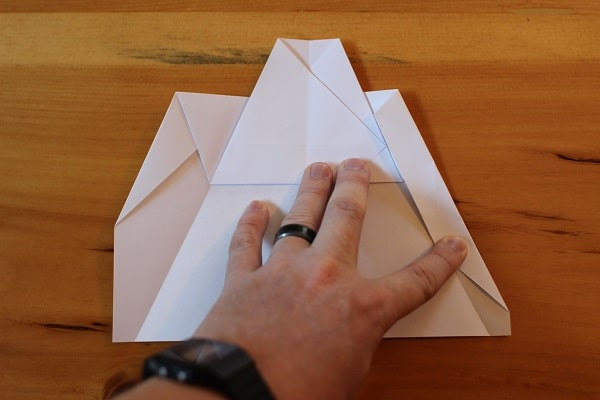 Fold corners in again
Fold corners in again -
Fold Wings In: Fold the wings in once more along the existing creases.
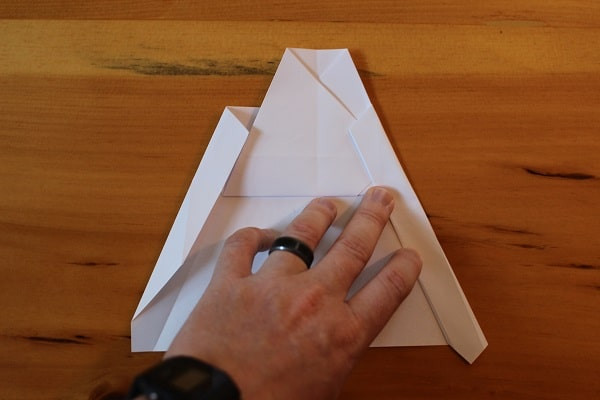 Fold wings in again
Fold wings in again -
Fold Top Down: Fold the top down from where it meets the top of the wing flaps.
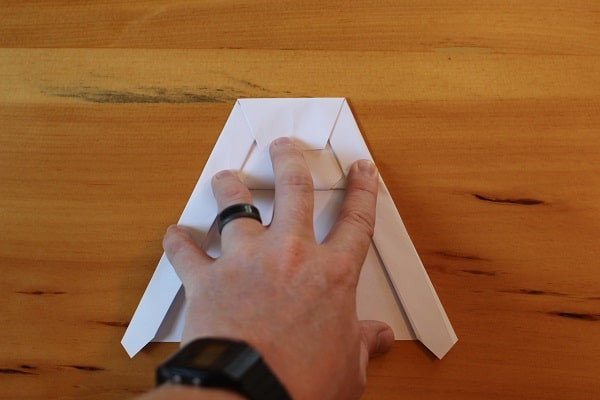 Fold top down to wing edges
Fold top down to wing edges -
Fold in Half Outward: Fold the entire thing in half outward, keeping all paper flaps on the outside.
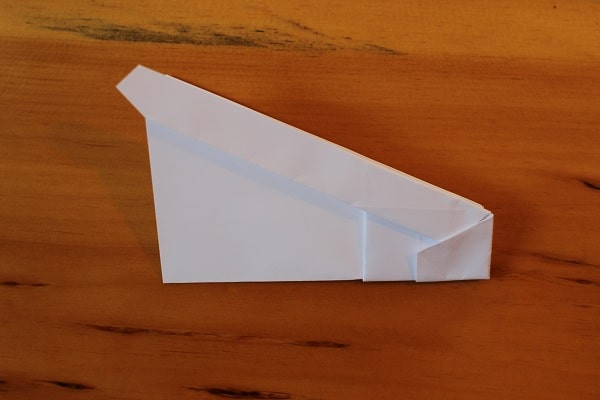 Fold in half outwards
Fold in half outwards -
Fold Wings Down: Fold the wings down so their edges meet the bottom edge of the plane, creating a small snub nose.
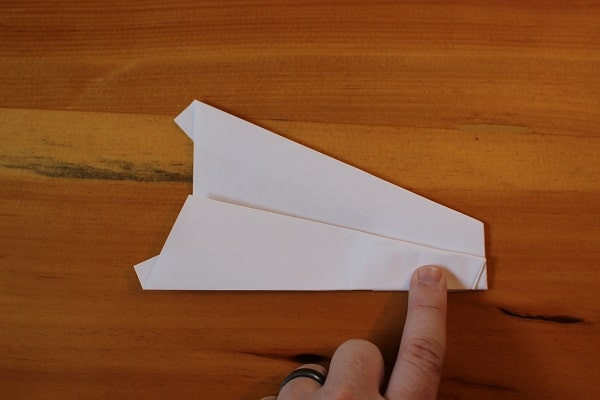 Fold wings down to bottom edge
Fold wings down to bottom edge
6.2. Tips for Flying the Hammer
- Strong Throw: The Hammer requires a strong, consistent throw for optimal distance.
- Wing Adjustment: Make minor adjustments to the wings to stabilize its flight.
- Outdoor Space: Choose a large, open space to fully appreciate its flight capabilities.
 Finished Hammer Paper Airplane
Finished Hammer Paper Airplane
7. What are Some Advanced Paper Airplane Designs?
Once you’ve mastered the basic models, you can explore more complex designs that offer unique flight characteristics. These advanced designs often incorporate intricate folding techniques and aerodynamic principles.
7.1. The Stealth Glider
This design focuses on minimizing drag for long, gliding flights. It features a sleek profile and carefully shaped wings to reduce air resistance.
7.2. The Boomerang
Designed to return to the thrower, the Boomerang utilizes specific wing angles and weight distribution to achieve its unique flight path.
7.3. The Space Shuttle
This model mimics the design of the Space Shuttle, with a wide body and delta wings for stable, high-speed flights.
7.4. The Concorde
Inspired by the supersonic jet, the Concorde paper airplane features a long, slender body and swept-back wings for achieving maximum speed.
8. How Do You Improve Paper Airplane Flight Performance?
Improving the flight performance of your paper airplanes involves understanding and applying various techniques. These adjustments can significantly enhance distance, stability, and overall flight characteristics.
- Symmetry: Ensure both wings are symmetrical for balanced flight.
- Sharp Creases: Make clean, sharp creases for better aerodynamics.
- Weight Distribution: Add paper clips to the nose for increased stability.
- Wing Adjustments: Bend the wing flaps up or down to control turning.
- Paper Quality: Experiment with different paper weights for varied results.
- Throwing Technique: Practice consistent throwing motions for repeatable flights.
9. What are Some Common Paper Airplane Troubleshooting Tips?
Even with the best designs, paper airplanes can sometimes have flight issues. Here are some common problems and how to fix them:
- Nose-diving: Add weight to the nose or adjust wing angles.
- Looping: Reduce weight in the nose or flatten the wings.
- Unstable Flight: Ensure symmetrical wings and balanced weight distribution.
- Short Distance: Throw with more force and adjust wing angles for better lift.
- Turning to One Side: Adjust wing flaps on the opposite side to correct the turn.
- Crashing Immediately: Check for proper folding and adjust weight distribution.
10. How to Compete in Paper Airplane Contests?
Participating in paper airplane contests can be a fun and rewarding way to test your skills. Here are some tips for competing and maximizing your chances of winning:
- Practice Regularly: Consistent practice will improve your folding and throwing techniques.
- Optimize Design: Choose a design that excels in either distance or flight time, depending on the contest rules.
- Adjust for Conditions: Consider wind and indoor vs. outdoor settings.
- Perfect Your Throw: Develop a consistent and powerful throwing motion.
- Study the Rules: Understand the specific rules and judging criteria of the contest.
- Experiment: Continuously experiment with new designs and adjustments to improve performance.
- FAA Regulations and Guidelines: Stay informed about FAA regulations and guidelines, especially if your interest extends beyond paper airplanes to real aviation.
11. How is Aviation in the USA?
The aviation industry in the USA is a dynamic and vital sector, encompassing commercial airlines, private aviation, manufacturing, and aerospace technology. It offers a wide range of opportunities and is characterized by continuous innovation and growth.
11.1. Key Aspects of Aviation in the USA
- Commercial Aviation: Major airlines such as Delta, United, and American Airlines operate extensive domestic and international routes, contributing significantly to the economy.
- General Aviation: A large community of private pilots, flight schools, and charter services provides opportunities for recreational flying and personal transportation.
- Manufacturing: Companies like Boeing and Lockheed Martin are leaders in aircraft manufacturing and aerospace technology, driving innovation in the industry.
- Airports: The USA has numerous major airports, including Hartsfield-Jackson Atlanta International Airport and Los Angeles International Airport, facilitating millions of flights annually.
- FAA Oversight: The Federal Aviation Administration (FAA) regulates and oversees all aspects of aviation in the USA, ensuring safety and efficiency.
- Economic Impact: The aviation industry supports millions of jobs and contributes billions of dollars to the US economy.
11.2. Aviation Training and Education in the USA
The USA offers world-class aviation training and education programs, attracting students from around the globe. These programs range from flight schools to university-level aerospace engineering degrees.
- Flight Schools: Numerous flight schools across the country provide training for aspiring pilots, offering certifications for private, commercial, and airline transport pilots.
- Universities: Top universities such as Embry-Riddle Aeronautical University and MIT offer comprehensive aviation and aerospace programs, producing highly skilled professionals for the industry.
- Specialized Training: Specialized training programs are available for aircraft maintenance, air traffic control, and aviation management, catering to various career paths.
- Online Resources: Online platforms and resources provide supplementary education and information for aviation enthusiasts and professionals.
- Scholarships and Financial Aid: Various scholarships and financial aid options are available to support students pursuing aviation education.
11.3. Career Opportunities in Aviation in the USA
The aviation industry in the USA offers a wide array of career opportunities, from piloting and engineering to air traffic control and management. The demand for skilled professionals is expected to grow in the coming years.
- Pilots: Commercial airline pilots, corporate pilots, and cargo pilots are in high demand, with attractive salaries and benefits.
- Aerospace Engineers: Engineers are involved in designing, developing, and testing aircraft and spacecraft, working on cutting-edge technologies.
- Air Traffic Controllers: Air traffic controllers play a crucial role in ensuring the safe and efficient flow of air traffic, requiring specialized training and skills.
- Aircraft Maintenance Technicians: Technicians are responsible for maintaining and repairing aircraft, ensuring they are safe and airworthy.
- Aviation Management: Management roles in airlines, airports, and aviation-related organizations offer opportunities to oversee operations and strategic planning.
- Flight Attendants: Flight attendants provide customer service and ensure passenger safety on commercial flights.
12. What are the Latest Aviation News and Trends?
Staying informed about the latest aviation news and trends is essential for anyone interested in the industry. Here are some current topics:
- Sustainable Aviation: Development and adoption of sustainable aviation fuels (SAF) and electric aircraft to reduce carbon emissions. According to research from the International Air Transport Association (IATA), in July 2024, the use of SAF has the potential to reduce aviation’s carbon footprint by up to 80%
- Drone Technology: Increasing use of drones for various applications, including delivery, inspection, and surveillance.
- Urban Air Mobility: Development of electric vertical takeoff and landing (eVTOL) aircraft for urban transportation.
- Advanced Air Mobility (AAM): Integrating new technologies and aircraft into the national airspace system.
- Artificial Intelligence (AI): Implementation of AI in air traffic management, predictive maintenance, and passenger services.
- Space Tourism: Growth of commercial spaceflights and opportunities for space tourism.
13. What are the FAA Regulations and Guidelines?
The Federal Aviation Administration (FAA) sets and enforces regulations and guidelines to ensure the safety and efficiency of air travel in the United States. Understanding these regulations is crucial for pilots, aircraft operators, and aviation enthusiasts.
13.1. Key FAA Regulations
- Pilot Certification: Requirements for obtaining pilot licenses and ratings, including flight hours, training, and exams.
- Aircraft Registration: Rules for registering and maintaining aircraft, ensuring they meet safety standards.
- Airspace Management: Regulations for operating in different types of airspace, including controlled and uncontrolled areas.
- Air Traffic Control Procedures: Guidelines for communicating with air traffic control and following their instructions.
- Maintenance Standards: Requirements for aircraft maintenance and inspections to ensure airworthiness.
- Safety Regulations: Rules for passenger safety, including baggage handling, emergency procedures, and security measures.
13.2. Resources for FAA Regulations
- FAA Website: The official FAA website (faa.gov) provides access to regulations, advisory circulars, and other important information.
- Pilot’s Handbook of Aeronautical Knowledge: A comprehensive guide for pilots covering various aspects of aviation.
- Aeronautical Information Manual (AIM): A reference guide for pilots providing information on air traffic control procedures, airspace, and airport operations.
- Flight Standards District Offices (FSDOs): Local FAA offices that provide guidance and oversight to pilots and aviation operators.
- flyermedia.net: Offers updated news and training for pilots, crew, and people who enjoy aviation.
14. What are Some Fun Facts About Airplanes?
Delve into the fascinating world of aviation with these fun facts about airplanes:
- First Flight: The Wright brothers made the first successful sustained flight on December 17, 1903, in Kitty Hawk, North Carolina.
- Largest Airplane: The Airbus A380 is the world’s largest passenger airplane, with a capacity of over 800 passengers.
- Fastest Airplane: The Lockheed SR-71 Blackbird is the fastest airplane ever built, reaching speeds of over Mach 3.
- Longest Flight: The longest non-stop commercial flight is from Singapore to New York, covering a distance of approximately 9,500 miles.
- Black Box: The “black box” flight recorder is actually orange to make it easier to find after a crash.
- Airplane Food: Airplane food tastes different due to the dry air and low pressure in the cabin, which affects our taste buds.
- flyermedia.net: Stay updated with more intriguing aviation facts and news.
15. Frequently Asked Questions (FAQ) About Making and Flying Paper Airplanes
15.1. What is the best type of paper for making paper airplanes?
Standard 8.5 x 11 inch printer paper is ideal for beginners. Experiment with different weights and textures for varied results.
15.2. How do I make my paper airplane fly farther?
Ensure symmetrical wings, sharp creases, and a balanced weight distribution. Adjust wing angles and throw with a consistent motion.
15.3. Why does my paper airplane keep nose-diving?
Add weight to the nose using a paper clip or coin. Also, make sure the wings have a slight upward angle.
15.4. How can I make my paper airplane fly straight?
Ensure the wings are perfectly symmetrical and adjust the wing flaps to correct any turning tendencies.
15.5. What is the ideal throwing technique for paper airplanes?
Throw with a smooth, consistent motion, applying force evenly. Avoid jerky movements that can disrupt the flight path.
15.6. Can I use scissors to improve my paper airplane design?
Yes, scissors can be used to trim and shape the wings for better aerodynamics. Be careful not to cut too much, as this can weaken the structure.
15.7. How do wind conditions affect paper airplane flight?
Wind can significantly affect flight. Fly into a slight headwind for increased lift or adjust your throw to compensate for crosswinds.
15.8. What are some common mistakes to avoid when making paper airplanes?
Avoid making uneven folds, using too much tape, and neglecting weight distribution. Precision and symmetry are key.
15.9. Where can I find more advanced paper airplane designs?
Explore online resources, books, and videos for advanced designs and folding techniques. Experiment with different models to find what works best for you.
15.10. Are there any competitions for paper airplane enthusiasts?
Yes, many local and international competitions exist. Check online forums and aviation communities for events in your area.
Conclusion: Discover Your Aviation Passion with Paper Airplanes
From simple darts to advanced gliders, paper airplanes offer endless opportunities for creativity and learning. Whether you’re a beginner or an experienced enthusiast, understanding the principles of flight and experimenting with different designs can lead to hours of fun and discovery.
Ready to take your aviation interest to the next level? Visit flyermedia.net to explore flight schools, aviation news, and career opportunities in the USA. Discover the resources you need to turn your passion for flight into a rewarding career.
Address: 600 S Clyde Morris Blvd, Daytona Beach, FL 32114, United States.
Phone: +1 (386) 226-6000.
Website: flyermedia.net.